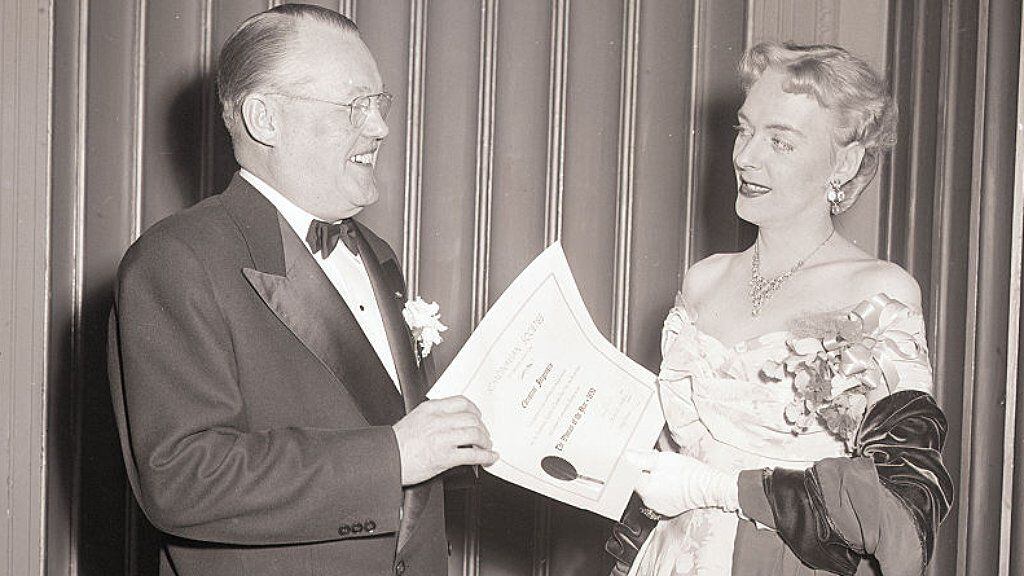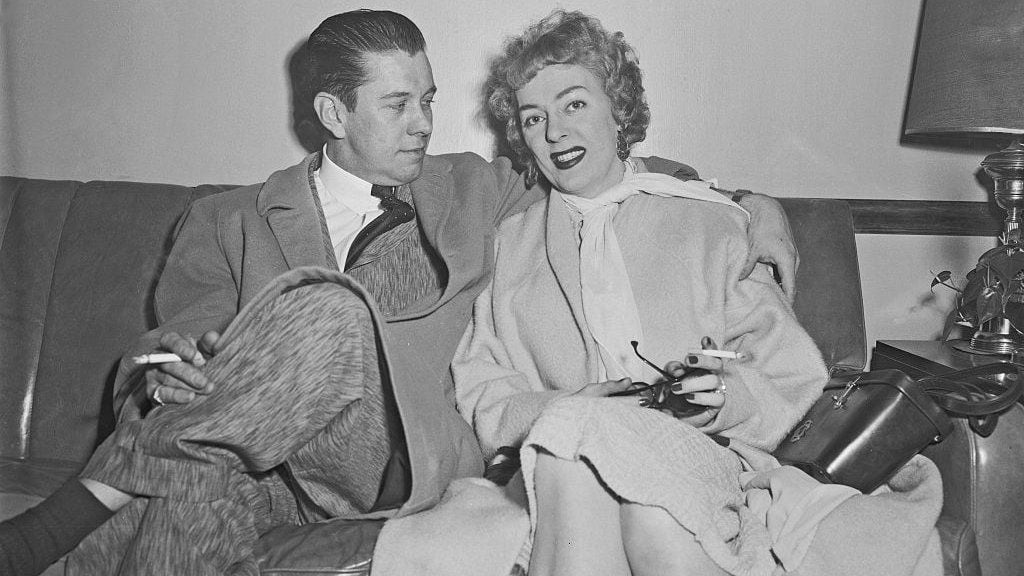:quality(75)/cloudfront-us-east-1.images.arcpublishing.com/elcomercio/GMYTCMJNGA3S2MBSKQYDAORTGE.jpg)
70 years ago, a slender 27-year-old blonde with long eyelashes, high cheekbones and full lips stepped out of a plane onto an airport tarmac in New Yorkwrapped in a fur coat.
He was an introvert, born in the Bronx to a large, close-knit family, who at age 19 had enlisted in the United States Army and served behind a desk during World War II.
LOOK: Celibacy: the surprising evolutionary advantages of the practice (and the economic interests it can hide)
But after that trip he became a celebrity for doing something unheard of.
George William Jorgensen Jr. had gone to Denmark and returned as the glamorous Christine.
“Ex-GI turns blonde beauty“, announced the New York Daily News; “A New York carpenter and his wife said today that they were delighted with the news that they had become parents of a new girl, blonde, attractive, 26 years old, “reported the Boston American on the same day in 1952.
They were the first to tell the story that would soon explore hundreds of media, making Christine a sensation.
Headlines celebrated her having been a soldier, declaring her an American beauty, describing her long legs, blond hair, and couture clothing.
All of this at a time when the military punished homosexuality with imprisonment, dishonorable discharge, or court-martial, and the freedom of other LGBT people was constantly at risk.
Why then was his case so exceptional?
The first
Although some pointed out that it was the first man to become a womanin the retelling of that history of pioneers, others appear before her.
The first, according to surviving records, was Rudolf Richter, a German born in 1891, who, after serving a sentence in a men’s prison for the crime of transvestism, was handed over by a judge to the care of the German doctor and first activist of the sexual rights Magnus Hirschfeld, who headed the Institute for Sexual Science in Berlin.
In 1922 Rudolf underwent an orchiectomy and in 1930 a penectomy followed by vaginal reconstruction, and began to live as Dora Richter.
In that same institute, the German Martha Baer, after being diagnosed as a male pseudohermaphrodite, underwent surgery in 1906 and in 1907 was legally registered as Karl, becoming the first woman to become a man and the first person to change sex.
But even though Christine Jorgensen intended to keep her transformation private, the indiscretion of an unidentified informant led to her being the first transgender woman to achieve world fame for undergoing sex reassignment surgery.
Faced with the avalanche of public attention at home and abroad, he left his shyness behind, jumped to the fore and became a living, attractive and eloquent example of gender diversity.

Not only did he seize the opportunity to launch himself as a nightclub artist, but through interviews and later his autobiography, as well as lectures at universities, he illuminated a reality obscured by veils and shadows.
A woman
The public learned that he never considered himself a man or a homosexual, but rather a woman; that it had been in a book-“The Male Hormone”, by Paul de Kruif (1945)-where he had found a possible explanation for his personal problem; that instead of taking testosterone to become more manly, as the book suggested, he started taking estrogen and consulted doctors who confirmed that some surgeons in Europe had already tried sex reassignment surgery.
Readers, listeners and viewers learned that in Copenhagen, Dr. Christian Hamburger had diagnosed him as a transsexual and had agreed to experiment on him free of charge and that, under Hamburger’s guidance, he had undergone two years of hormone treatments, psychiatric evaluations and, finally, surgery to remove the male genitalia.
They discovered that she had chosen the name ‘Christine’ in honor of her doctor.
And she was adored.
For a few months.

When reporters contacted the surgeons who transformed her and discovered that she had no vagina (Christine had not yet had her vaginoplasty), “the newspapers exposed her as ‘an altered man,’ and Jorgensen’s supporters around the world were outraged at discovering that Christine wasn’t a ‘real’ woman,” as author David Serlin recounts in “Christine Jorgensen and the Cold War Closet.
But unfortunately, what is surprising is not that he was the target of hatred and discrimination, but would have enjoyed a grace period.
“Boy Turned Girl”
Paradoxically, Christine was favored by society in part because she fit within its strict heterosexual parameters in an exemplary way.
As a man, he was a patriot, an honorably discharged soldier as a World War II veteran, the masculine representation par excellence postwar.
As a woman, her features, beauty, dress, mannerisms, and behavior were the embodiment of that femininity feared at risk since the fairer sex had taken over traditionally male occupations during the war.
And at the intersection between those two beings, there was – in the words of the Daily News – “the wizardry of science”what in the atomic age promised to conquer nature, for better or for worse, and the vision of a future in which doctors would find miraculous cures to whatever ailed them.
All of that wrapped up in the American dreamthe one in which the illusion is not lost despite apparently insurmountable obstacles and success is achieved thanks to effort.

Thus, Christine was shot to stardom in a society in which homosexuals, transvestites, and other transsexuals lived under the threat of being stigmatized, fired, arrested, or ridiculed.
Those were the “lilac terror” years, when Senator Joseph McCarthy’s anti-communist campaign explicitly linked homosexuality to subversion and Soviet sympathies. FBI chief J Edgar Hoover used the agency to target dozens of gay government employees.
In 1953, President Eisenhower signed Executive Order 10450, which ruled that homosexual people were a risk to national security because they were vulnerable to blackmail.
Meanwhile, vice police were arresting homosexuals in bars, parks and other public spaces.
The position on the pedestal of “a boy turned into a girl” was always going to be wobblyBut while she was in it, Christine didn’t stop forcing audiences to question what they took for granted.
A woman?
Even after the disclosure of her vaginoplasty, and despite being forced to reveal intimate details, such as “of course I will never be able to have children, but this does not mean that I cannot have natural sexual relations: I am in the position of a woman who undergo a hysterectomy,” the question for many always remained if she was “really” a woman.

The Legal Answer it came to light in 1959, when she was denied a marriage license to Howard J. Knox, because although her sex was listed as “female” on her passport, her birth certificate said “male.”
But Christine’s response it promoted a new notion of biological sex that was increasingly prevalent in Europe but had not yet begun to take hold in the US, not even among the scientific community: there were not two opposite sexes but rather a sexual spectrum.
When, for example, in a 1958 interview, the presenter Nipsey Russell asked him “Are you a woman?”, he replied: “You seem to suppose that all people are either male or female… Each person is actually both to varying degrees.” … I am more a woman than a man.”
Furthermore, she invited her audience to wonder if, being the same person, she was somehow more acceptable as a straight woman than as a feminine man who was attracted to men, and if so, why.
On the other hand, the attention generated by his case contributed to reconsidering notions and refining knowledge; American doctors, for example, began to distinguish transsexuality from cross-dressing and homosexuality.
A few years before her death in 1989, Christine was reunited in Denmark with the doctors who had helped her through her transformation. In statements to the media, she recognized the milestone that her case represented. “We didn’t start the sexual revolution, but I think we gave it a good kick in the pants!”.
Source: Elcomercio
I, Ronald Payne, am a journalist and author who dedicated his life to telling the stories that need to be said. I have over 7 years of experience as a reporter and editor, covering everything from politics to business to crime.






